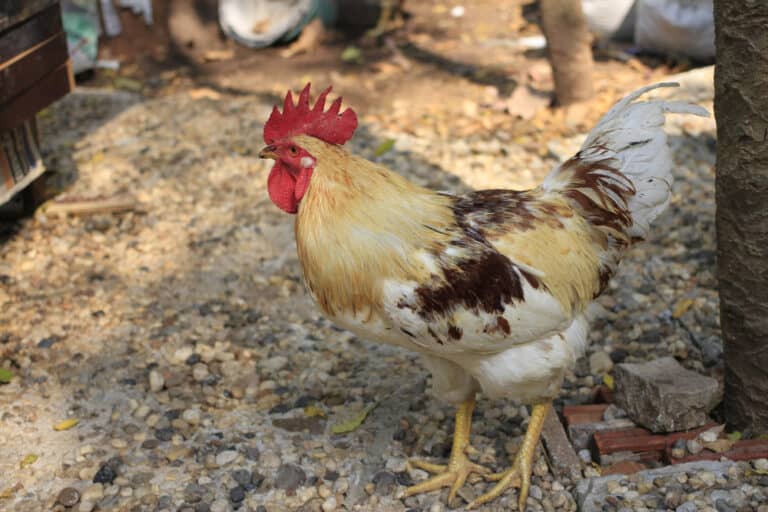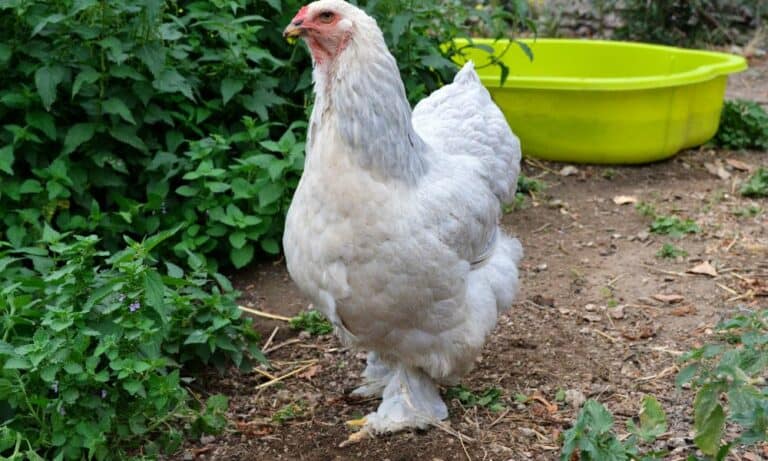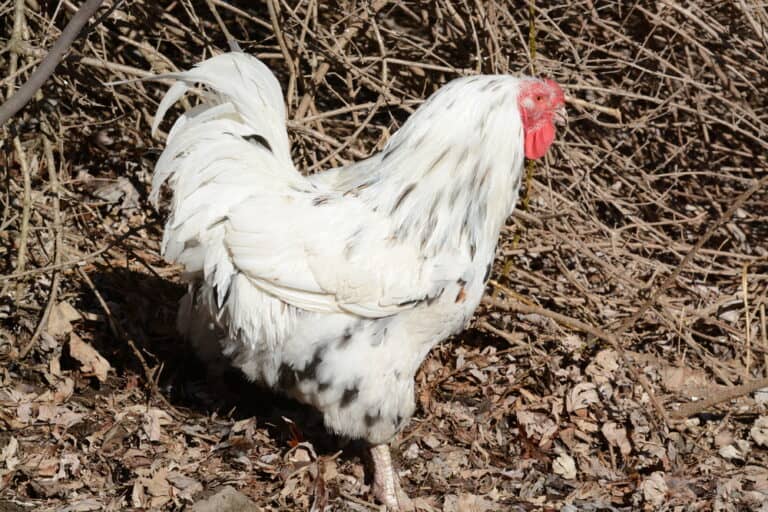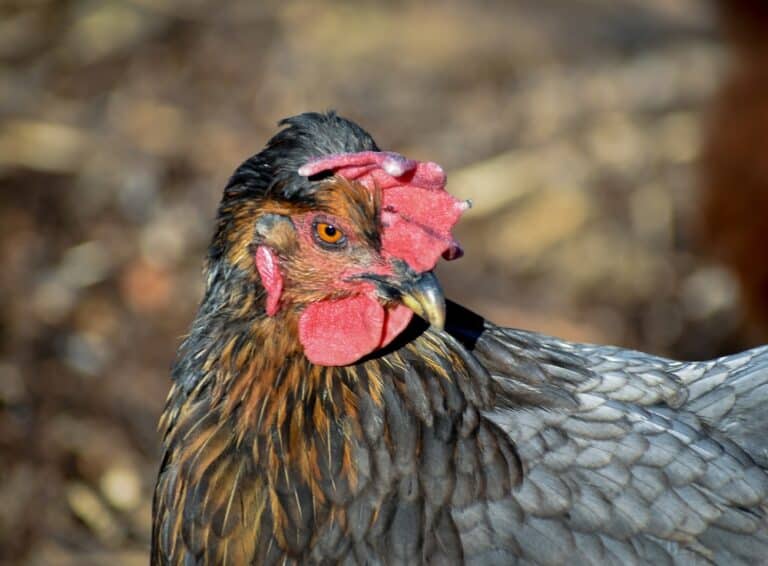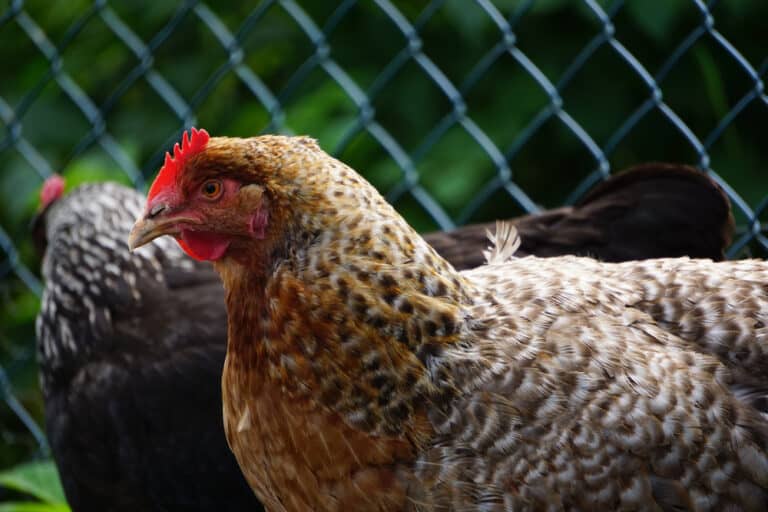It’s always interesting to learn about rare chicken breeds, but few appear as impressive as the Indian Giant Chicken. This breed is fairly new and only came around at the end of the 20th century, but it’s quickly capturing global attention.
The Indian Giant Chicken is the world’s tallest chicken with many measuring over 4 feet toe-to-beak when stretched horizontally. They have a rugged, rustic appearance, but serve faithfully as human companions when raised well.
Keep reading to learn more about where the Indian Giant comes from, what they look like, and what it takes to care for them properly.
Indian Giant Chicken Origin
The Indian Giant Chicken originates from Brazil, where it is recognized as a purebred chicken and has a standard through the Associação Brasileira de Criadores de Índio Gigante (ABRACIG).
Known locally as the Índio Gigante, the breed name refers back to indigenous Brazilians and their culture. It’s a fairly new breed, only starting out in the late 1980s and early 1990s in the states of Goiás and Minas Gerais.
In the early years, breeders would focus on breeding only the tallest of their stock to get where we are with the breed today. Contributing breeds include:
- Malay Chickens
- Shamo Chickens
- Rustic Brazilian free-range chickens (with no defined breed)
There is some argument that Plymouth Rocks were also used to create the breed, but this is not verified by ABRACIG.
While they’re not recognized worldwide, the Brazilian Association of Giant Chicken Breeders works to organize the continuation of the breed to standard. They hope to receive official recognition in the next few years for the first pure breed originating from Brazil.
Now, you can find Indian Giant Chickens outside of Brazil, but they’ll often cost a pretty penny. Any adherence to the current standard gets muddy outside of Brazil and the oversight of ABRACIG, but there’s no denying the monstrous size of these chickens when you see them.
Indian Giant Chicken Appearance and Standard
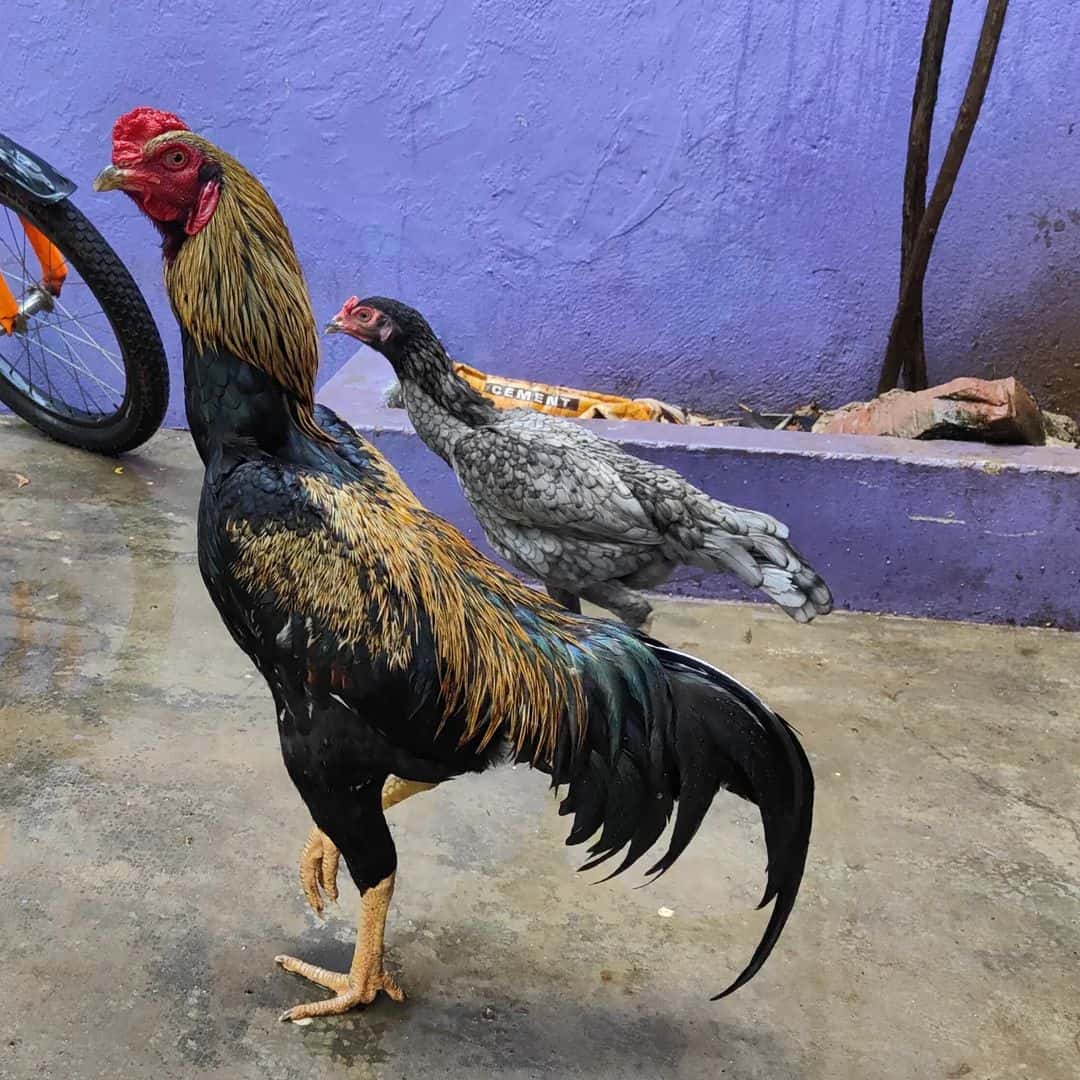
To start, Indian Giant chickens are massive. There are large breeds, and then there is the extra-large size we see in the Indio Gigante.
According to the breed standard, Indian Giant hens must be at least 90 cm (about 35.5 inches) tall, and roosters start at 1.05 meters (about 41 inches). The females weigh 3+ kg (6.6+ lbs) and males weigh a minimum of 4.5 kg (nearly 10 lbs).
This breed of chicken has a rugged, muscular appearance. Their chests and thighs are broad and defined, enhanced by short, hard feathers that sit close to the body. Their skin is yellow or orange, and their shanks are bare.
Plumage colors usually include:
Indian Giant Chickens have medium or large heads atop on extremely long neck. They have a small pea comb, and, like the contributing fighting breeds, a small or non-existent wattle.
While you’re most likely to see them strutting around like modern-day dinosaurs, the Indian Giant Chicken does have a set of strong wings tucked tightly to their body. These end along with the base of the tail, which is also close to the body, but may stretch out for short flights.
Indian Giant Chicken Temperament
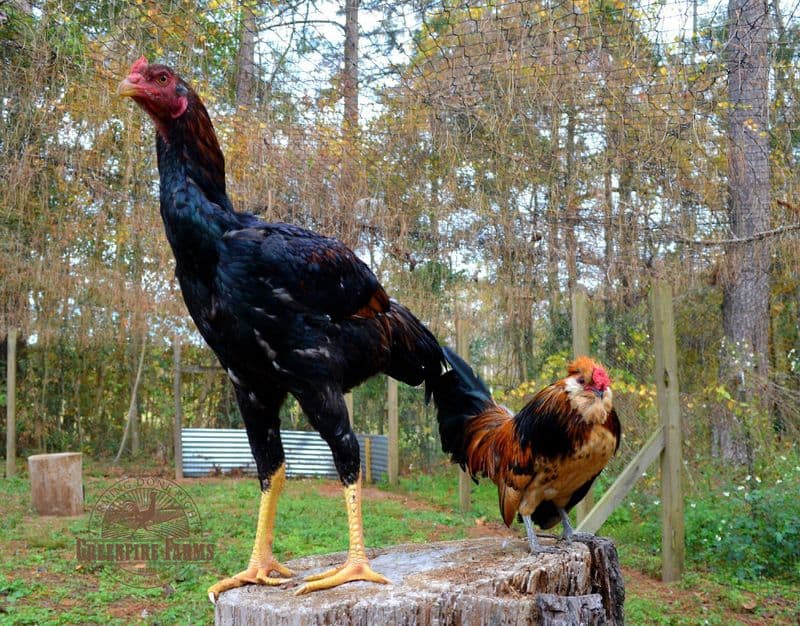
Despite their impressive characteristics, the Indian Giant Chicken is a docile breed well suited to blend with any backyard flock. They get along with most chicken breeds, and it’s usually the other breed you have issues with.
Indian Giant Chickens are also one of those breeds that think they’re much smaller than they actually are, which can be comical given how nicely they get along with humans. If they’re well-socialized from hatching, an Indian Giant Chicken can easily become an affectionate lap chicken.
They’re not excused from natural instincts to protect their young and their flock. While Indian Giant hens aren’t prone to broodiness, those that go broody can pick up a pretty scary attitude. Roosters protecting their hens and young are a terrifying sight when you have 3.5+ feet charging you.
Indian Giant Chicken Eggs and Aptitude
https://www.youtube.com/watch?v=yqDWqy6AWkg
Indian Giant chickens are well-suited as dual-purpose birds, but their impressive appearance means most serve as powerful flock ornaments.
Some claim that Indian Giant Chicken egg production sits around 250 eggs per year, but ABRACIG only recognized an average of 160 eggs per year. Hens mature around 210 days (7 to 8 months), but they’re not fully mature for exhibition until 14 months.
The eggs that they lay are mostly extra large brown eggs, but they can show up in a variety of colors like various shades of white, red, blue, and green. Hens will lay for an average of 5 years before production starts to wane.
The extra-large size of the rooster is attractive for those wanting a dual purpose chicken breed. They reach sexual maturity around 8 months and remain great breeding stock until about 40 months. They aren’t full-size until 14 months, but growth slows dramatically at the 8 month stage and it isn’t often worth it to keep them any longer if raising for meat.
Because the breed is still in its early stages, most raise them with the intent of showing the birds or cultivating the breed. There simply aren’t enough around, and they still lack recognition by organizations like the American Poultry Association.
Besides–they have an amazing personality and serve loyally as pets. The Indian Giant Chicken often complements the good layers in your mixed flock, such as Jersey Giants or Rhode Island Reds.
Caring for Indian Giant Chickens
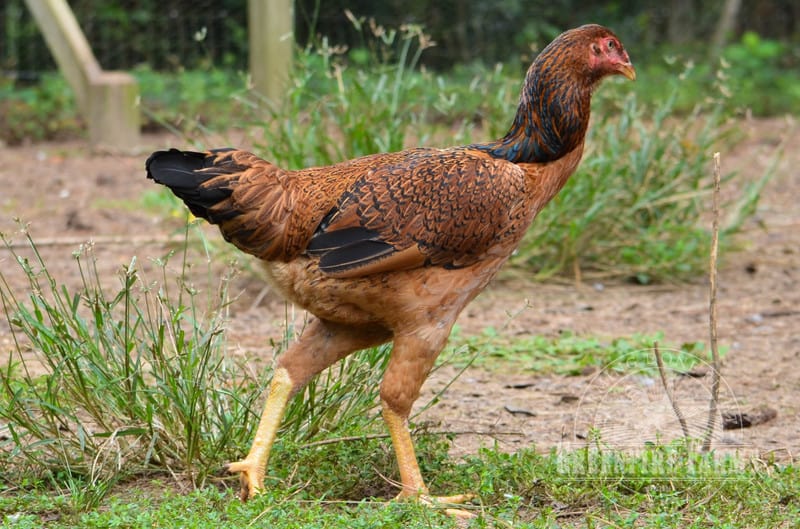
Indian Giant Chickens are fairly hardy breeds. They do decent in the cold but thrive in the heat, and they’re not not susceptible to illnesses from delicate breeds or more productive egg-laying breeds.
This doesn’t mean that they’re a sit-and-forget breed. Taking an Indian Giant Chicken in means you assume responsibility for:
- Feeding them a completely nutritious diet
- Providing secure shelter from predators and weather
- Setting up preventative health measures as well as quick response to illness or injury
As long as you cover these basics, you should be able to enjoy your Indian Giant Chicken for the entirety of their life.
Feeding Indian Giant Chickens
Indian Giant Chickens are avid foragers, and they’ll gladly eat up insects and viable plants in any area you offer. Despite this, you must feed them a baseline commercial feed suited for their current life stage to ensure proper development.
As a large breed, expect rapid growth and a need for nutrient-rich food. Starting with a high-protein chick starter is important so they can develop their strong muscles early on. This sets the foundation for the rest of their growth and prevents size-related issues later in life.
Feeding Indian Giants as they mature is simpler. Switch to a maintenance or layer feed once they mature, and make sure you offer calcium to the hens to prevent any egg-related issues.
Commercial feed should be offered at all times (unless you have an overeater in your flock), and it should account for about 90 percent of what they eat. The other 10 percent should come from foraging as well as whatever chicken-safe fresh fruits and vegetables you can offer.
Sheltering Indian Giant Chickens
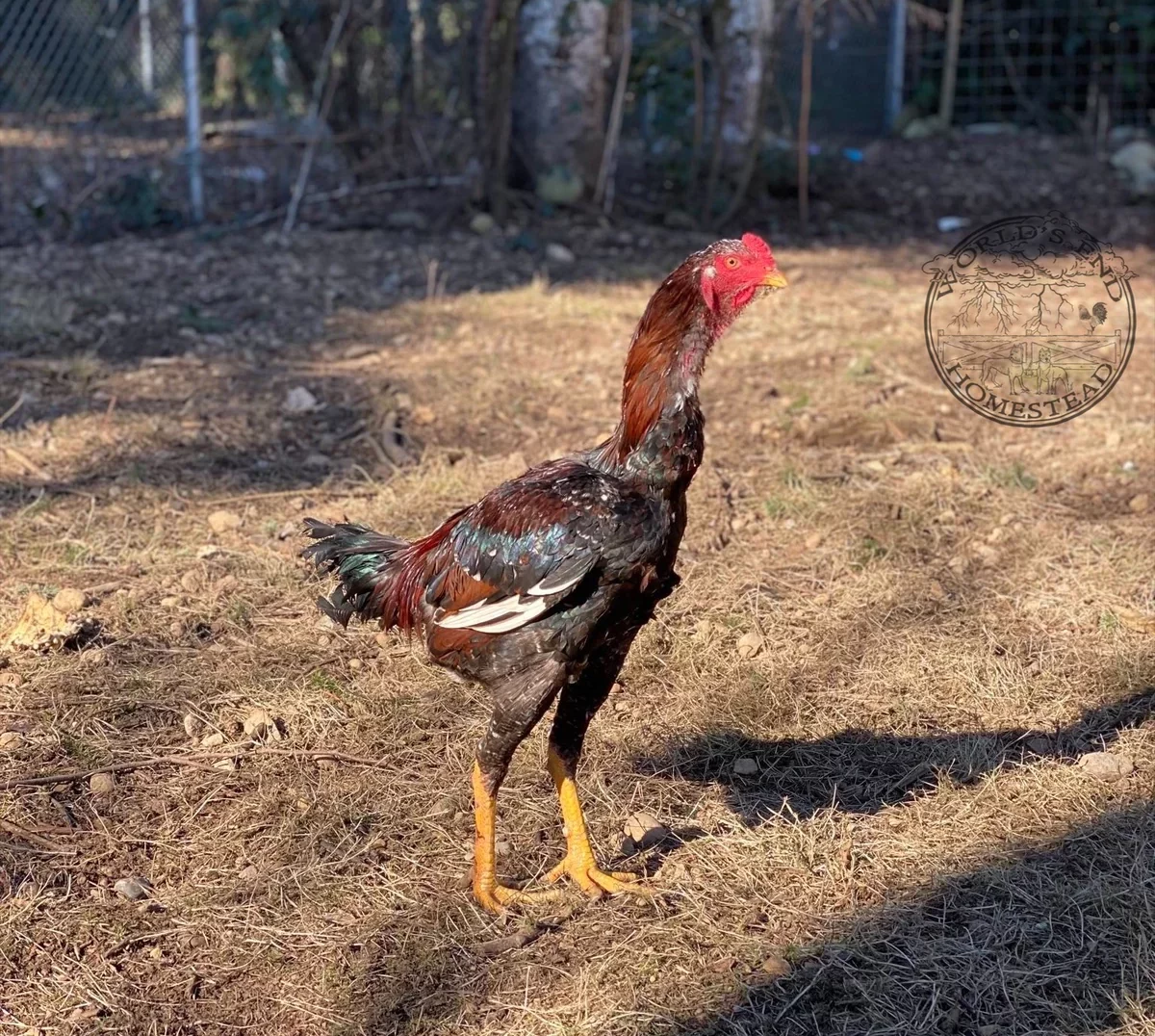
Indian Giant Chickens can handle their own when free-ranging, but they’re still domesticated birds that need a safe space to sleep and hide in inclement weather.
Offer at least 6 square feet in the coop per chicken with nesting boxes well suited to their size. They also need more roost space than the average chicken, about 15 to 18 lateral inches, and you should space the perches further apart.
If you have a contained chicken run, offer them at least 18 square feet of space per bird. Keep in mind that this breed can fly for short distances, and offer as much room as you can offer; one of the main reasons for aggression in Indian Giants is overcrowding.
Use hard wood and metal whenever possible to keep your structures sturdy and standing. Opt for hardware cloth over poultry mesh and make sure the enclosed spaces have plenty of ventilation and natural light to keep your chickens in a good mood.
Clean the space often to prevent the spread of disease. Overall, an Indian Giant Chicken coop and run should be dry and as free of waste as possible.
Health Care for Indian Giant Chickens
While they’re a hardy breed, Indian Giant Chickens still need routine care to stay healthy.
We recommend finding a poultry veterinarian familiar with large breeds. Even better if they have experience with the Indian Giant.
Utilize existing vaccines to prevent dangerous illnesses like:
- Newcastle disease
- Infectious bronchitis
- Fowl pox
- Coccidiosis
- Marek’s disease
Deworm your chickens on a regular schedule (usually 2 to 4 times a year), and inspect them regularly for any signs of injury or parasitic infestation. Make sure you clean your equipment regularly and keep their living spaces well-ventilated and dry.
Conclusion
With the right level of care and consideration, you can easily add this velociraptor-looking chicken breed to your flock. It may take some time and funds to find a well-bred example, but it pays off in the end.
Remember:
- A high-protein diet is especially important for developing Indian Giant chicks
- You need more space in all areas for this larger breed
- Their hardiness is not an excuse to limit preventative care
Let us know if you have further questions regarding the Indian Giant Chicken!

